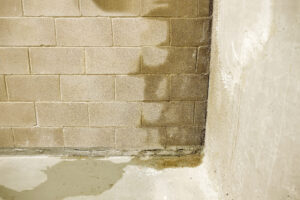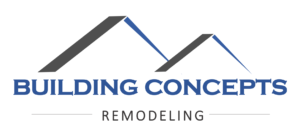 Basement waterproofing is an essential aspect of home maintenance that often gets overlooked until problems arise. A damp or wet basement can lead to a host of issues, including mold growth, structural damage, and compromised indoor air quality. This guide will walk you through the critical steps to waterproof your basement effectively, ensuring that your remodeling efforts are not undermined by moisture problems.
Basement waterproofing is an essential aspect of home maintenance that often gets overlooked until problems arise. A damp or wet basement can lead to a host of issues, including mold growth, structural damage, and compromised indoor air quality. This guide will walk you through the critical steps to waterproof your basement effectively, ensuring that your remodeling efforts are not undermined by moisture problems.
Understanding the Importance of Basement Waterproofing
Water intrusion can wreak havoc on a home’s foundation and overall structure. The presence of moisture creates an environment conducive to mold and mildew, which can pose health risks to occupants. Effective basement waterproofing not only mitigates these risks but also enhances the longevity and value of your home.
The Consequences of Neglecting Waterproofing
Failing to address moisture issues can lead to:
-
-
- Structural Damage: Water can weaken the foundation, leading to costly repairs.
- Mold Growth: A damp environment is perfect for mold, which can affect air quality and health.
- Decreased Property Value: Homes with water issues are less appealing to buyers.
-
Common Causes of Basement Moisture
Before diving into waterproofing techniques, it’s crucial to understand the common causes of moisture in basements. Identifying these issues will help you implement effective solutions.
Hydrostatic Pressure
Groundwater accumulation around the foundation exerts pressure, forcing water through cracks and gaps in the walls and floors. This phenomenon is particularly problematic in areas with high water tables.
Poor Drainage Systems
Ineffective drainage systems can lead to water pooling around the foundation. This can occur due to clogged gutters, improperly installed downspouts, or inadequate grading of the landscape.
Foundation Cracks
Natural settling or poor construction practices can lead to cracks in the foundation, allowing water to seep in. Cracks wider than one-eighth of an inch should be addressed promptly.
Condensation
High humidity levels in the basement can lead to condensation on walls and floors, contributing to moisture-related issues. This is often exacerbated by poor ventilation.
Assessing Your Basement’s Condition
Before implementing waterproofing measures, it’s essential to assess the current condition of your basement. A thorough inspection will help you identify specific problem areas and determine the best course of action.
Steps for a Comprehensive Inspection
-
-
- Check for Visible Cracks: Inspect both the interior and exterior walls for any signs of cracking.
- Look for Water Stains: Water stains on walls or floors can indicate previous moisture issues.
- Test Humidity Levels: Use a hygrometer to measure humidity levels; ideally, they should be below 50%.
- Inspect Gutters and Downspouts: Ensure they are clean and directing water away from the foundation.
-
Effective Exterior Waterproofing Techniques
Exterior waterproofing is often the first line of defense against moisture intrusion. By addressing issues outside, you can prevent water from reaching your foundation.
Improving Yard Grading and Drainage
Proper grading directs water away from your home. The ground should slope away from the foundation at a rate of at least six inches over ten feet. Consider adding soil to low areas or installing a French drain system to redirect water.
Installing or Upgrading Gutters and Downspouts
Gutters and downspouts play a crucial role in directing rainwater away from your foundation. Regular maintenance is essential:
-
-
- Clean Gutters: Remove debris to ensure proper water flow.
- Extend Downspouts: Ensure they discharge water at least 15 feet away from the foundation.
- Consider Underground Drainage: This can help carry water even further from your home.
-
Applying Exterior Waterproof Coatings
An exterior waterproof coating can provide an additional layer of protection. The application process typically involves:
-
-
- Excavating Soil: Expose the foundation walls.
- Cleaning and Repairing: Address any cracks or damage.
- Applying a Waterproof Membrane: This creates a barrier against moisture.
-
Interior Waterproofing Solutions
When exterior waterproofing is insufficient, interior solutions can help manage water that has already penetrated the basement.
Sealing Cracks and Holes
Start by addressing any visible cracks or holes in your basement walls and floors. Use hydraulic cement to fill gaps, ensuring a watertight seal.
Applying Waterproof Masonry Cement
After sealing cracks, consider applying waterproof masonry cement to the walls. This additional layer of protection can help prevent moisture from seeping through.
Installing Interior Drainage Systems
For more severe water issues, an interior drainage system may be necessary. This typically involves:
-
-
- Excavating a Trench: Along the perimeter of the basement floor.
- Installing a Perforated Pipe: To collect water.
- Connecting to a Sump Pump: For effective water removal.
-
The Role of Sump Pumps in Waterproofing
Sump pumps are vital for managing excess water, especially in areas prone to flooding. They help minimize damage and maintain a dry environment.
Types of Sump Pumps
-
-
- Submersible Pumps: Ideal for homes with frequent water issues, these sit inside the sump pit.
- Pedestal Pumps: Better suited for smaller pits, these are typically less expensive and easier to maintain.
- Battery Backup Pumps: Provide protection during power outages, ensuring continued operation.
-
Additional Measures for a Dry Basement
Beyond waterproofing techniques, several measures can help maintain a dry basement environment.
Controlling Indoor Humidity
-
-
- Use Dehumidifiers: Keep humidity levels below 50%.
- Ensure Proper Ventilation: Install exhaust fans in areas prone to moisture, such as bathrooms and laundry rooms.
-
Regular Maintenance
-
-
- Inspect the Foundation: Check for cracks or signs of deterioration twice a year.
- Clean Gutters and Downspouts: At least twice a year to ensure proper drainage.
-
DIY vs. Professional Waterproofing
While some waterproofing tasks can be handled by homeowners, others require professional expertise. Understanding when to call in the experts can save time and money.
When to Hire Professionals
-
-
- Severe Water Intrusion: If you experience flooding or extensive water damage.
- Foundation Repairs: Addressing significant cracks or structural issues.
- Installing Interior Drainage Systems: Such as French drains.
-
Cost Considerations for Basement Waterproofing
The cost of waterproofing can vary widely based on several factors, including the severity of the problem and the chosen solutions.
Factors Influencing Costs
-
-
- Size of the Basement: Larger areas will generally incur higher costs.
- Severity of Water Issues: More extensive problems will require more resources.
- DIY vs. Professional: Hiring experts can increase costs but may save money in the long run.
-
Budgeting for Waterproofing Methods
| Method | Estimated Cost |
|---|---|
| Epoxy Crack Filling | $800–$1,500 per crack |
| Exterior French Drain Installation | $10–$100 per linear foot |
| Interior Waterproof Paint | $1–$8 per square foot |
| Sump Pump Installation | $1,500–$2,500 |
Long-Term Maintenance for a Waterproof Basement
Once waterproofing measures are in place, regular maintenance is crucial for ensuring long-term effectiveness.
Routine Inspections
-
-
- Check for New Cracks: Inspect walls and floors for signs of moisture or new cracks.
- Test Sump Pumps: Ensure they are functioning correctly every few months.
-
Addressing Small Issues Promptly
By staying vigilant and addressing minor problems quickly, you can prevent major water issues from developing.
We Remodel Basements for Clients
Are you looking to unlock the hidden potential of your home’s lower level? Basement remodeling services can help you transform that dark, underutilized space into a vibrant and functional area that adds value to your property.
> Learn More
Waterproofing your basement is a critical step in protecting your home from moisture-related issues. By understanding the causes of basement moisture and implementing effective waterproofing techniques, you can safeguard your investment and enjoy a dry, safe, and comfortable living space. Regular maintenance and professional assistance are key to long-term success, ensuring that your basement remains a valuable part of your home for years to come.
Contact Us (513) 769-5044 for a Consultation!
—
About Business Concepts Remodeling

Building Concepts specializes in custom remodeling projects across the Greater Cincinnati Area. Our comprehensive residential and commercial experience has built a reliable reputation you can trust. Every day, we work to build trust through communication and attention to detail. We strive to enhance the lives of our clients by providing high quality solutions with hands on service. Throughout the remodeling project, minimal disruption to your home or office is our highest priority.
